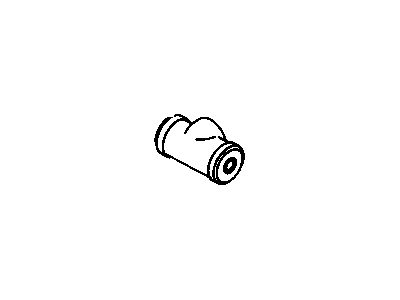
My Garage
My Account
Cart
Genuine Chevrolet Beretta Wheel Cylinder
Brake Wheel Cylinder- Select Vehicle by Model
- Select Vehicle by VIN
Select Vehicle by Model
orMake
Model
Year
Select Vehicle by VIN
For the most accurate results, select vehicle by your VIN (Vehicle Identification Number).
3 Wheel Cylinders found
Chevrolet Beretta Cylinder Asm,Rear Brake
Part Number: 19213346$25.30 MSRP: $47.74You Save: $22.44 (47%)Ships in 1-2 Business DaysChevrolet Beretta Cylinder Asm,Rear Brake
Part Number: 18060091$6.24 MSRP: $71.58You Save: $65.34 (92%)Ships in 1-2 Business Days
Chevrolet Beretta Wheel Cylinder
To elaborate, the Wheel Cylinder in Chevrolet Beretta automobiles is an important fixture that exerts pressure on the brake shoes in order to bring these into contact with the brake drums with the view of ending the speed or slowing up the car as desired. To accomplish this objective, this hydraulic system incorporates pistons, cup seals, and an expander spring housed in a cast iron or aluminum casing. Wheel cylinder has the following operation that is when the brake pressure is applied it extends the pistons pushing the shoes on the drum and on the removal of the brake pressure it contracts the pistons. Usually they rust and swell up, and this can cause leakage and a weak braking system; in this case the wheel cylinder will require inspection or even replacement or reconditioning. Generally it is preferred that wheel cylinders should be replaced at any time brake shoes are worked on for safer road use.
Each OEM Chevrolet Beretta Wheel Cylinder we offer is competitively priced and comes with the assurance of the manufacturer's warranty for the part. Furthermore, we guarantee the speedy delivery of your orders right to your doorstep. Our hassle-free return policy is also in place for your peace of mind.
Chevrolet Beretta Wheel Cylinder Parts Questions & Experts Answers
- Q: How to overhaul a wheel cylinder on Chevrolet Beretta?A:If an overhaul is necessary due to fluid leakage or sticking brakes, it is important to consider all options before starting the job. New wheel cylinders are available, which can make the task easier. However, if you choose to rebuild the wheel cylinder, ensure that rebuild kits are readily available. To begin, raise the rear of the vehicle and support it securely on jackstands, while also blocking the front wheels to prevent rolling. Remove the brake shoe assembly and thoroughly clean the area around the wheel cylinder on both sides of the backing plate. Unscrew the Brake Line fitting using a flare nut wrench, but do not pull the line away from the wheel cylinder. Next, remove the wheel cylinder retainer using two screwdrivers and carefully take out the wheel cylinder from the brake backing plate, placing it on a clean workbench. It is important to immediately plug the brake line to prevent fluid loss and contamination. To overhaul the wheel cylinder, remove the bleeder valve, seals, pistons, boots, and spring assembly from the wheel cylinder body. Clean the wheel cylinder using brake fluid, denatured alcohol, or brake system cleaner, and then use compressed air to dry it and blow out any passages. Check the bore for corrosion and score marks, using crocus cloth to remove light corrosion and stains if possible. If the defects cannot be easily removed or if the bore is scored, the cylinder must be replaced with a new one. Lubricate the new seals with brake fluid and assemble the brake cylinder components, ensuring that the boots are properly seated. For installation, place the wheel cylinder in position and use a wood block between the axle flange and the wheel cylinder body to hold it in place. Install the retainer over the wheel cylinder using a 1-1/8 inch 12-point socket to press it into place. Connect the brake line and install the brake shoe assembly. Finally, bleed the brakes.







